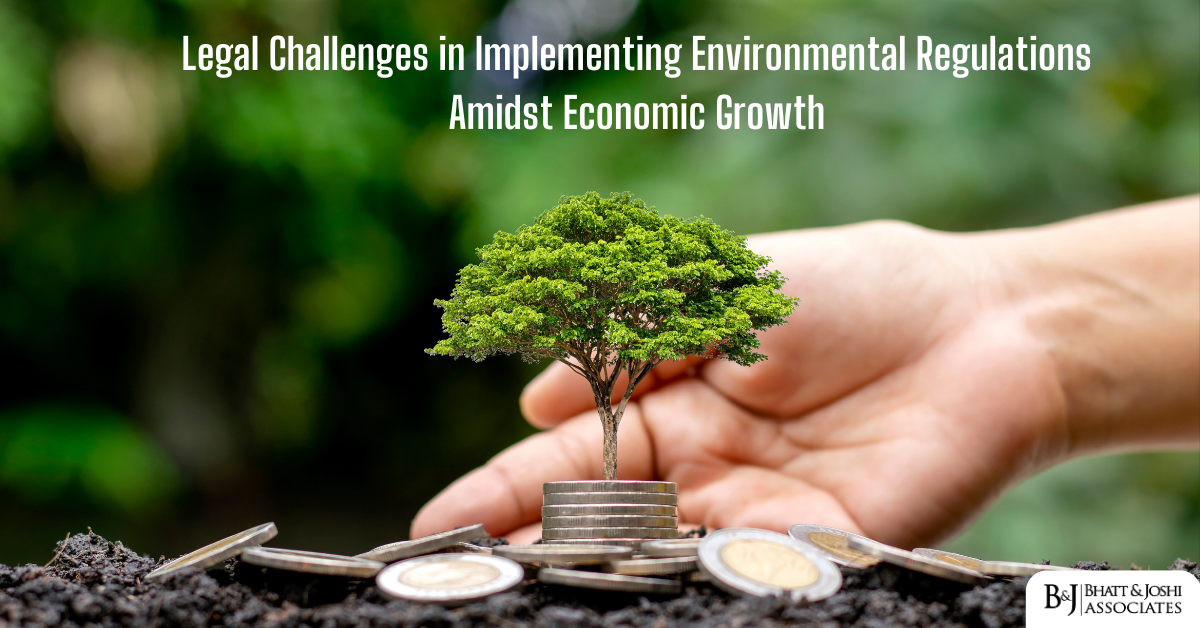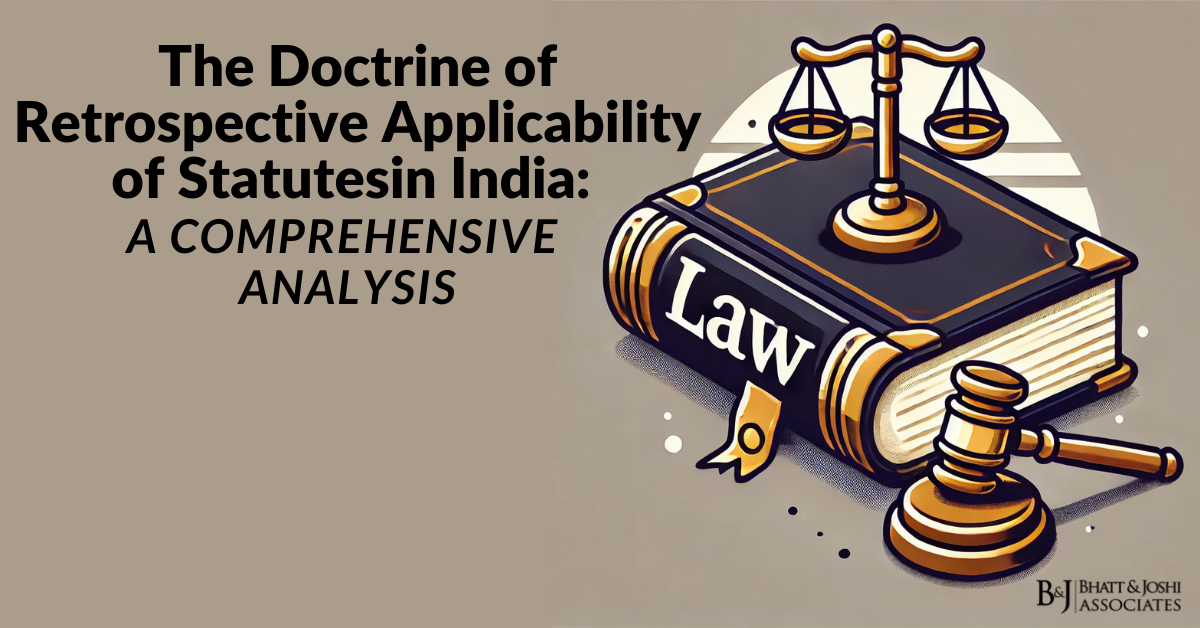Introduction
Environmental regulation is an essential aspect of sustainable development, aiming to strike a balance between economic growth and ecological preservation. However, implementing these regulations often presents significant legal challenges. These challenges arise from conflicts between environmental priorities and economic objectives, legal ambiguities, enforcement deficiencies, and the socio-political dynamics of development. This article explores legal challenges in implementing environmental regulations, examining the regulatory frameworks, relevant laws, case laws, and judicial interventions that shape this dynamic
The Intersection of Environmental Regulation and Economic Growth
Economic growth has long been associated with industrialization, urbanization, and increased exploitation of natural resources. While these activities contribute to national and global economic development, they often come at the expense of environmental degradation. Regulatory frameworks aim to mitigate this degradation by imposing restrictions and obligations on industries and other polluting entities. However, the pursuit of economic growth frequently conflicts with stringent environmental regulations, creating a complex interplay between development objectives and ecological concerns.
One of the primary challenges lies in the perception that environmental regulations are obstacles to economic progress. Industries and policymakers often argue that compliance with these regulations increases costs and stifles competitiveness. This tension is particularly acute in developing economies, where the need for rapid industrial growth often outweighs environmental considerations. Moreover, in such economies, policymakers frequently prioritize immediate economic gains over long-term environmental sustainability, further exacerbating the problem.
Environmental degradation due to unchecked economic activities manifests in various forms, including air and water pollution, deforestation, biodiversity loss, and climate change. These impacts undermine the natural capital essential for long-term economic prosperity, creating a paradox where short-term economic benefits lead to long-term ecological and economic costs. Addressing this paradox is at the heart of the legal and regulatory challenges faced by governments and societies worldwide.
Regulatory Frameworks and Legal Foundations
Environmental regulations are typically grounded in national constitutions, statutory laws, and international agreements. Many countries enshrine environmental protection as a fundamental duty in their constitutions. For instance, Article 48A of the Indian Constitution directs the state to protect and improve the environment. Similarly, Article 21, which guarantees the right to life, has been interpreted by Indian courts to include the right to a healthy environment. These constitutional provisions serve as the foundation for comprehensive environmental legislation.
In the United States, environmental regulations are primarily governed by federal laws such as the Clean Air Act, the Clean Water Act, and the National Environmental Policy Act. These statutes are enforced by agencies like the Environmental Protection Agency (EPA), which sets standards, monitors compliance, and takes enforcement actions against violators. State governments also play a significant role, often implementing federal regulations and enacting additional measures tailored to local environmental conditions.
At the international level, agreements such as the Paris Agreement on climate change and the Convention on Biological Diversity establish frameworks for global environmental governance. These agreements require signatory nations to implement domestic measures that align with their commitments, adding another layer of regulatory complexity. For instance, the Paris Agreement emphasizes reducing greenhouse gas emissions to limit global temperature rise, compelling nations to adopt stringent regulatory measures and promote sustainable practices across industries.
Challenges in Implementing Environmental Regulations
Despite robust legal frameworks, implementing environmental regulations is fraught with challenges. One significant issue is the conflict between environmental and economic priorities. Governments often face pressure to relax environmental standards to attract investment and foster economic growth. For example, certain administrations in the United States have rolled back EPA regulations, citing the need to reduce regulatory burdens on businesses and promote economic competitiveness.
Another challenge is the legal ambiguity in environmental laws. Many statutes contain vague provisions or fail to address emerging environmental issues, leading to interpretive conflicts. For example, the regulation of greenhouse gas emissions has been a contentious issue in many jurisdictions, with courts often stepping in to clarify legislative intent. Additionally, the dynamic nature of environmental challenges—such as the rise of plastic pollution and the need for renewable energy transitions—requires constant updates to legal frameworks, which can lag behind technological and scientific advancements.
Enforcement deficiencies further exacerbate the problem. Regulatory agencies are often underfunded and understaffed, limiting their capacity to monitor compliance and take corrective actions. Corruption and political interference can also undermine enforcement efforts, particularly in developing countries. These issues are compounded by a lack of public awareness and participation, which diminishes the societal impetus for stringent enforcement of environmental laws.
Judicial Interventions in Environmental Regulation: Key Case Laws
Courts play a pivotal role in addressing legal challenges related to environmental regulations. Judicial interventions often bridge the gap between legislative intent and implementation, ensuring that environmental protections are not compromised. In many cases, courts have expanded the scope of environmental rights and obligations, providing clarity and direction for regulatory enforcement.
In India, the landmark case of M.C. Mehta v. Union of India (1987) established the principle of absolute liability for industries engaging in hazardous activities. This judgment significantly enhanced accountability for environmental harm and underscored the importance of sustainable industrial practices. The Supreme Court’s proactive stance in this case set a precedent for stringent judicial oversight in environmental matters.
Similarly, the Vellore Citizens’ Welfare Forum v. Union of India (1996) case introduced the “polluter pays” principle and the concept of sustainable development into Indian environmental jurisprudence. The court directed industries to adopt cleaner technologies and comply with environmental standards, balancing economic growth with ecological preservation. These principles have since become cornerstones of environmental law in India and have been referenced in numerous subsequent cases.
In the United States, the Supreme Court’s decision in Massachusetts v. EPA (2007) was a landmark ruling that recognized greenhouse gases as pollutants under the Clean Air Act. This decision compelled the EPA to regulate carbon emissions, highlighting the judiciary’s role in addressing legislative gaps in environmental regulation. The case underscored the importance of judicial intervention in compelling regulatory agencies to fulfill their statutory mandates.
International Case Studies
Globally, legal challenges in implementing environmental regulations reflect similar tensions. In Brazil, the enforcement of laws protecting the Amazon rainforest has faced significant hurdles due to illegal logging, mining, and political resistance. The Brazilian government’s efforts to balance environmental protection with economic interests have often been criticized for prioritizing short-term economic gains over long-term ecological sustainability. Recent initiatives to strengthen enforcement mechanisms and international pressure have shown some promise, but significant challenges remain.
China presents another illustrative case. While the country has made substantial progress in enacting stringent environmental laws, enforcement remains inconsistent. Rapid industrialization has led to severe air and water pollution, prompting the government to strengthen regulatory mechanisms. However, local governments often prioritize economic growth over environmental compliance, undermining national efforts. The introduction of environmental courts and stricter penalties for violations has improved enforcement to some extent, but achieving a balance between economic and environmental priorities remains a formidable challenge.
Emerging Trends and the Way Forward
Technological advancements and evolving societal values are reshaping the landscape of environmental regulation. Innovations in clean energy, waste management, and pollution control offer opportunities to reconcile economic growth with ecological preservation. For instance, renewable energy projects have gained significant traction worldwide, reducing reliance on fossil fuels and mitigating environmental impacts. Similarly, advancements in carbon capture and storage technologies have the potential to significantly reduce greenhouse gas emissions.
Public participation and awareness are also crucial for effective implementation. Citizen-led movements and non-governmental organizations play an instrumental role in holding governments and industries accountable. Legal frameworks that incorporate mechanisms for public consultation and access to environmental justice can enhance transparency and compliance. For example, the Aarhus Convention in Europe provides a robust framework for public participation in environmental decision-making and access to justice.
Another critical trend is the integration of environmental considerations into economic policies and planning. Governments are increasingly adopting green growth strategies that prioritize sustainable practices and incentivize environmentally friendly technologies. For instance, policies promoting the circular economy aim to reduce waste and optimize resource use, creating economic opportunities while minimizing environmental impact.
The Role of International Cooperation
Addressing global environmental challenges requires robust international cooperation. Multilateral agreements such as the Paris Agreement and the United Nations Framework Convention on Climate Change (UNFCCC) emphasize collective action to combat climate change. However, disparities in economic capabilities and development priorities among nations often hinder the effectiveness of these agreements. Bridging these gaps through technology transfer, financial assistance, and capacity building is essential for achieving global environmental goals.
Conclusion
Implementing environmental regulations amidst economic growth is a complex legal challenge that requires a multifaceted approach. While robust legal frameworks exist, their effectiveness depends on consistent enforcement, judicial oversight, and public participation. Striking a balance between development and ecological preservation necessitates a shift in societal attitudes, prioritizing long-term sustainability over short-term economic gains. By addressing these challenges through innovative policies, technological advancements, and strengthened legal mechanisms, it is possible to achieve a harmonious coexistence between economic growth and environmental protection. Furthermore, fostering international cooperation and integrating environmental considerations into economic planning are critical for building a sustainable future. The journey toward reconciling these competing priorities is challenging but indispensable for the well-being of current and future generations.














